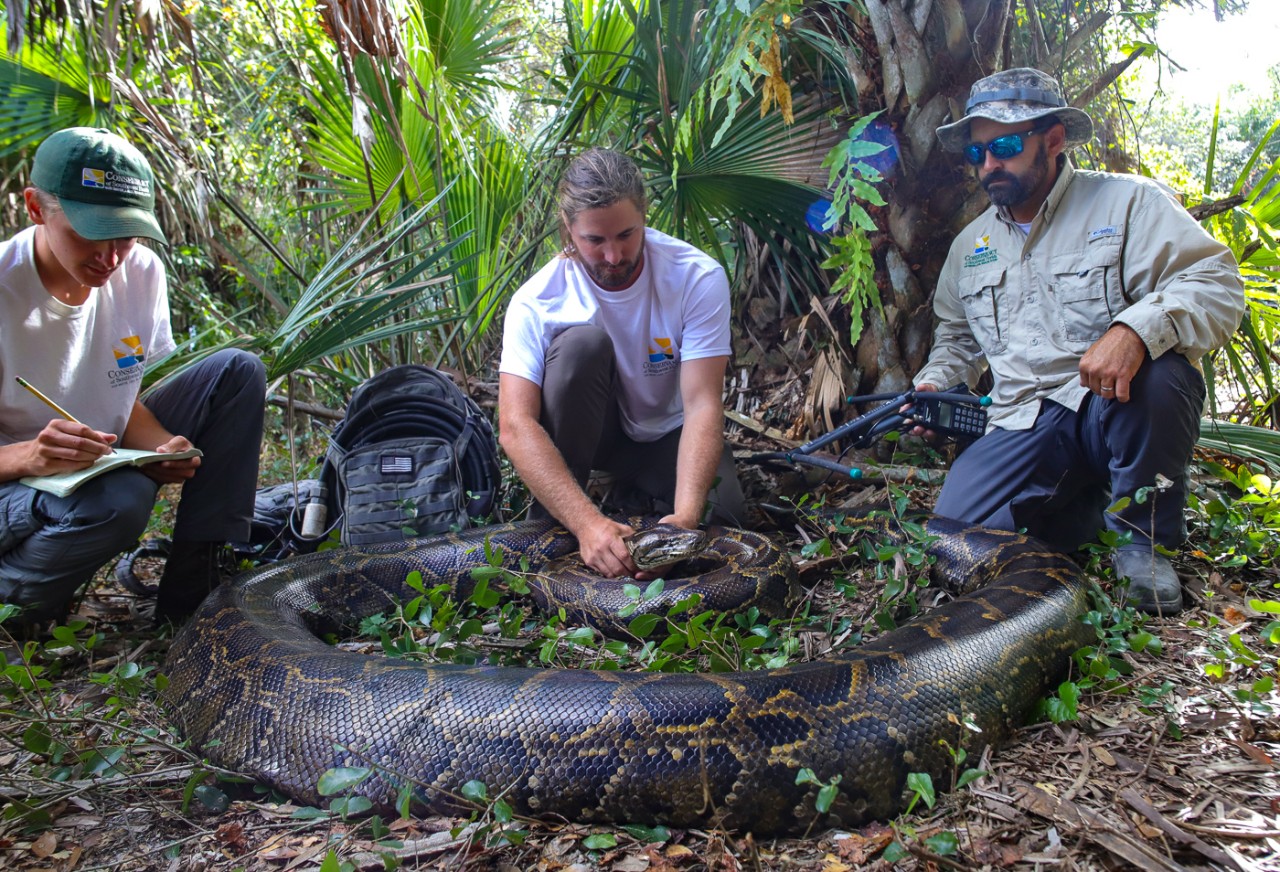
Scientific American: How a python can devour a whole deer
Burmese pythons can swallow prey much bigger than their heads, UC study finds
Scientific American highlighted research by the University of Cincinnati that examined how Burmese pythons swallow prey far bigger than their heads.
UC College of Arts and Sciences professor Bruce Jayne examined the gape of Burmese pythons, which have invaded parts of Florida where they have found a smorgasbord of prey choices.

UC biologist Bruce Jayne demonstrates the enormous gape of a euthanized Burmese python captured in the Everglades. Photo/Bruce Jayne
Jayne and his co-authors found that it’s not just the size of the snake's head and body that puts almost everything on a python’s menu. They evolved super-stretchy skin between their lower jaws that allows them to consume prey up to six times larger than similarly sized snakes.
The study, funded in part by a grant from the National Science Foundation, was published in the journal Integrative Organismal Biology.
One common misunderstanding is that snakes dislocate their jaws to swallow prey, Jayne said.
But unlike our jaws, those of pythons and other snakes are comprised of two bones separated by stretchy skin.
“The stretchy skin between left and right lower jaws is radically different in pythons. Just over 40 percent of their total gape area on average is from stretchy skin,” Jayne said. “Even after you correct for their large heads, their gape is enormous.”
Read the Scientific American story.
Featured image at top: Ian Bartoszek, right, science project manager for the Conservancy of Southwest Florida, captures a 215-pound Burmese python in Everglades National Park. Photo/ Conservancy of Southwest Florida
UC Biology in the News

UC professor Bruce Jayne works in his biology lab. Photo/Joseph Fuqua II/UC
- India Narrative: Scientists discover how pythons swallow huge prey like alligators
- Earth.com: How can pythons eat prey as big as a deer?
Related Stories
News Cincinnati loved in 2025
January 2, 2026
The story of prohibition bootlegger George Remus was among WLWT's favorite segments in 2025. UC Law Professor Christopher Bryant spoke with journalist Lindsay Stone about Remus using a temporary insanity defense during a murder trial.
What to know about this year’s big tax changes
January 2, 2026
Local 12 reported that taxpayers can expect some major changes this tax season. Gary Friedhoff, adjunct instructor at the University of Cincinnati’s Carl H. Lindner College of Business, recently spoke to Local 12 about how to avoid surprises.
Study finds police officers face higher long-term health risks
January 2, 2026
J.C. Barnes, a University of Cincinnati professor, is interviewed by Spectrum News about new research showing that the physical and psychological demands of law enforcement can contribute to earlier deaths.
